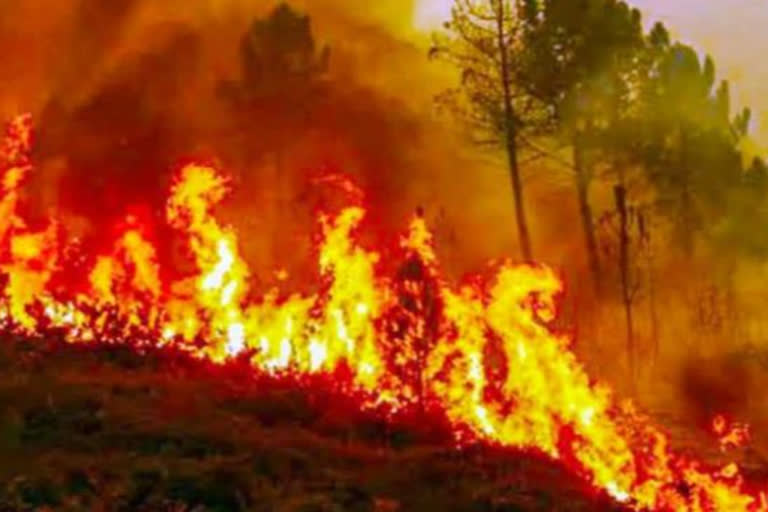Dehradun: The raging fires in Uttarakhand forests are posing a serious threat to the Himalayas since it is set to trigger Black Carbon in the Himalayan region. Black carbon, which often causes glaciers to recede, is emitted into the atmosphere due to incomplete combustion of fossil fuels in motor vehicles and aircraft exhausts, bio-fuel, and biomass.
Scientists from Wadia Institute of Earth Sciences, Uttarakhand, who keep an eye on the Himalayas and its glaciers for a long time, believe that carbon is spreading on the snow-laden peaks of the Himalayas. The amount of carbon in the Himalayas has increased two and a half times to 11800 nanograms/cubic meters and working as a catalyst in melting glaciers.
Wadia Geosciences Center had set up its instruments to measure the amount of carbon in Chirbasa, at a height of 3,600 meters, and Bhojbasa, at a height of 3,800 meters. Both are in Uttarakhand. Black carbon concentration in this region has changed drastically during summer.
Dr. BP Doval, a former scientist at Wadia Institute of Himalayan Geology, says that "forest fires in Uttarakhand are increasing the carbon in the Himalayas and the black materials absorb more light and emit infra-red radiation that increases the temperature. So, when there is an increase in black carbon in the high Himalayas, it will contribute to the faster melting of Himalayan glaciers. Due to global warming, the tree line is gradually moving up, shrinking the area for wild animals."
Scientist BP Doval also said, "Uttarakhand has two significant wealth, the first is forest and the second is glaciers. Because of the glaciers, Uttrakhand has water resources but now both forests and glaciers are eradicated."
Nishant Verma, Chief Conservator of Forests, Forest Department, Uttarakhand says that the "Ministry of Environment, Forest, and Climate Change has entrusted the responsibility of conducting a study on the impact caused by forest fire under different parameters like carbon sequestration, carbon storage, and soil moisture. The states of Uttrakhand and Madhya Pradesh were designated for the study. It is expected that after the study by next year, the data on the environmental damage caused by forest fires, will be made available by this central body."
Read: Uttarakhand Minister rules out helicopter use to douse forest fires, to send more teams



